After the experience with his last games, Dave decided he needed a dedicated games debugger. A debugger is a tool that allows the programmer to find his bugs and makes development a whole lot simpler. The problem with most games, is that they use the whole machine; memory, screen – everything, and no normal debugger. So Dave commissioned Brian to write a new debugger, one that was game friendly and would aid in development without expensive PC hardware. Brian decided to use Devpac as a template, and set about reproducing it’s layout and interface.
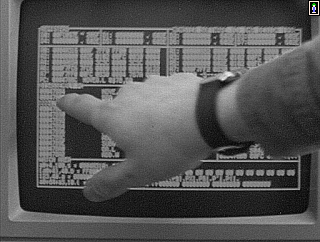
Debug in action

Also around this point, Dave also now started to do a series of 6 articles for Amiga Format, all about games programming. He wrote a special framework that budding games programmers could use to get complete control of the system, then became one of the first developers to then go on to release the full source a published game; Menace.

This is now a common practice, with some high profile companies such as ID Software, and Sierra releasing their own back catalogue. The framework program turned out to be incredibly useful, and helped many games programmers find their feet in the complex work of Amiga programming. Each episode of the article, he would release a new section of the Menace source code, and detail exactly what he did and why. This series of articles turned out to be very important for many programmers, since it gave them a first hand insight into how games were written.
I was progressing well with Blood Money, and had decided to write my own tape loading routines. Unlike the normal, run of the mill turbo loaders, I wanted one that would allow users to play a simple game while it loaded. These had started to appear on other loaders – like “Delta‘s” mix-e-load, and I really wanted to try and get something similar.
Dave meanwhile, decided that walker wasn’t really going anywhere, it needed a rethink. So he and Tony set about writing a new game, called Gore!
Tony drew a man with a large axe, much like Golden axe, and then added some background tiles. Dave then wrote a 3 level parallax scrolling system to place the characters in, and tried to think of a way to store these huge images. The character had to be broken up into 16×16 pixel blocks (hence the grid in the animation above) in an attempt to fit him into memory; ultimately, this wasn’t enough, but it was a good place to start.
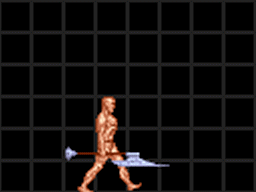


Dave had also gotten a new contract to write “Shadow of the Beast” on the C64, something he handed over to a friend of mine call Richard Swinfen. Richard was still at school when Dave sub-contracted the work to him, and it was to consume a large portion of his life! Steve was conscripted to do the graphics in his spare time between College and sleeping, something which Steve and Richard would be deprived of, for a long time to come.
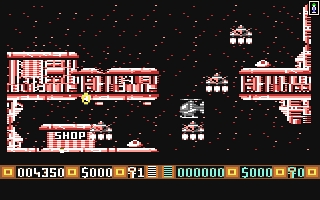
I was now finishing up on Blood Money, and it was all going very well. The last level was being polished off, and Psygnosis had started to test the game. During testing however, my tape system failed a couple of times, and even though it got fixed, Psygnosis got understandably edgy and decided to use an off the shelf one, much to my dismay. Still, the rule is, if they get it to fail a couple of times here, it’ll fail “thousands” out in the wild, and that would be a lot of returned tapes, so I can see why they made that decision.
Brian was progressing with the debugger, and he could now view the code and step through it, allowing simple debugging.
Once Blood Money was finished, I got my first bonus; enough to finally buy an Amiga of my very own! Splashing out around £400 on the Batman pack I took my new A500 home to play with. I didn’t play long however, before the programming bug bit again, and I was soon getting down and dirty with it.
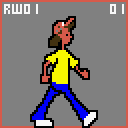
Using the framework Dave had written for the Amiga format articles, I started to code a basic platform game. However, like most of the games I would start outside of the office, it never got very far. I’ve discovered over the years just how hard it was to do a job all day, and then to go home and do the same thing at night.
Gary had by now, done enough animations to start a game using them. Dave brought in another friend of mine, Tony Colgan to start a new game called Cutiepoo. Tony and I first met at the Bell street tech computer club, and since we were both were C64 users, we started to swap code and demos.

When Tony started on Cutiepoo, he and Gary sat down and came up with a simple game design. Basically, Cutiepoo (the main character), was trying to save little furry tribbles (as inspired by StarTrek), from a character called Doc. Mallet. This was the days of simple games, and true to this mantra, Dr. Mallet ran about trying to kill the tribble by squishing them with a huge mallet. This all took place inside a chocolate factory – for some reason.
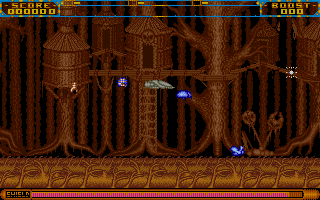
Meanwhile, Dave’s friend Wayne Smithson (who wrote Blood Money on the Atari ST, and many, many, MANY! other games), had just started his own company called WJS Design. Everyone tried very hard to keep a straight face when talking about Wayne’s new company name, although it was soon dubbed “We Just Steal Design“. However, Wayne was a great guy, and two companies soon started to rib each other in a friendly game of FAX wars. This was the first time either of them had access to a FAX machine, and this went to their head’s.
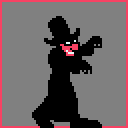
It started out innocently enough, but soon everything was being faxed; sketches, old printouts etc. Wayne finally won however, by faxing Kitkat wrappers and crisp packets much to the enjoyment of the DMA lot, who doubled over laughing before giving up.
Having just finished Blood Money on the 12th March, I now started on a Gore test of my own for the C64. I created a special multiplexor and managed to get the code necessary to draw the huge sprites, but by now Dave was now having problems. Dave was busy testing his new compression for Gore, but wasn’t having much luck. Even his best attempts weren’t enough, he simply needed more memory. His best guess was that he needed a minimum of 1Mb of memory, and this amount just wasn’t common enough at the time.
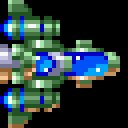
So, Dave “temporarily shelved ” Gore! This was the first of many projects DMA would “temporarily shelve” and unlike walker, never pick up again later. With Gore being shelved, I was also forced to stop my version, and preceded to try and my own Lemmings test on the C64. I got as far as a single Lemming walking over a landscape before Dave found another job for me.
Dave had received some Amiga artwork from an artist down south, one J. Lewis and decided to get me working on a new Amiga shoot-em up. I love doing shooters, and doing one on the Amiga was going to be great fun!

The shoot-em-up consisted of a space ship which sat at the left hand side of the screen, and had “multiples” above and below. When all weapon pods were collected, the ship would filled the screen. The Animations, and backgrounds were beautifully done, and I was having a blast doing real Amiga work.
Dave now also sought something different. His new idea was an Action replay for the Amiga, called the “Monster Cartridge”. The idea was based on the C64 action replays and Expert cartridges that were common on that platform, and the Amiga was yet to get such a tool. Coming from an electronics background set Dave in good stead for attempting such a mammoth task alone. He bought in lots or breadboards (special electronic test sets), and software for auto-routing tracks ( this is software that automatically worked out connections for wires that connected the chips together).
He started all this by planning it all out, then wire-wrapping it all by hand! Fortunately, Dave found this very therapeutic, and spent many hours in the back room with Tony and Gary, wrapping little wires to his board. Once the basic design was complete, Dave needed software to test it on.
Richard was getting on great guns with Shadow of the Beast on the C64, by now he had lots of code written, and the first level was progressing nicely using all the converted graphics Steve had done.

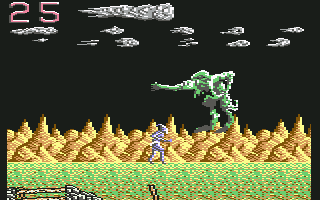
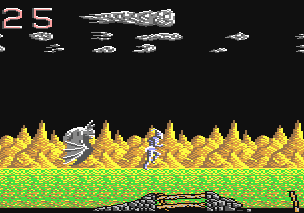
While I chipped in with minor technical help now and then, Richard was mostly on his own. This was partly due to the fact that since he was still at school, he usually coded late in to the night and early morning. Once the school holidays started, he was coding almost 24 hours a day! Scott surprised everyone one day when he brought in his new Amiga game to show off. He had been working on if for sometime, and now had the basics running. It was an RPG game, much like Dungeon Keeper, but this time, it allowed you to control all four players, and each had their own view.
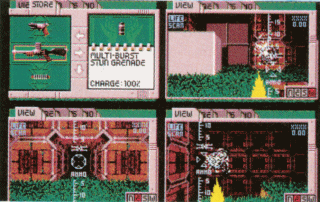
Dave was impressed, and this would soon lead to a deal with Scott to publish it, although Scott would continue to write this at home for some time yet.
Brian was progressing with the debugger, and it was by now a fully featured tool, and totally self contained. That made the choice simple; Dave took “DMA Debug” and put it on the Monster cartridge (hence the name change to Monster Debug).
Unlike most cartridges on the C64, Dave’s was software programmable. This gave it a huge advantage, no longer did you just throw it away to get the new version, all you needed was a new floppy disk. Tony volunteered to try the new toy out while developing Cutiepoo, and seemed to enjoy the ease of use it provided.
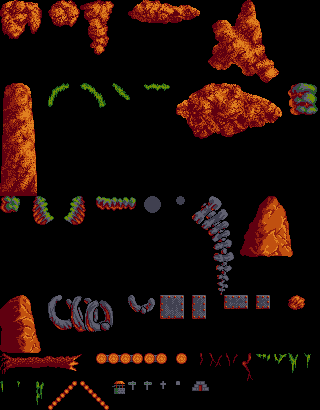
While all this was going on, Dave had finally decided to start a version of Lemmings himself. He didn’t really take it very seriously at this point, he just wanted to play and see what happened. Gary, now split his time with Cutiepoo and Lemmings graphics, but there was a problem. Gary just couldn’t get the hang of doing background graphics, so Scott came to the rescue and produced the first the rock and earth set.
Once Dave got the basics going, he and Gary came up with the basics skills, and screen layouts and Gary set about creating the animations. While Gary did this, Dave carried on with his Monster Cartridge. He was having some technical problems with it, and it didn’t always work the way it was supposed to.
I meanwhile was getting on well with the Amiga game. I had the basic ship flying and animating over a right to left scrolling background, and was just about to start adding aliens and bullets, when Dave stopped me again. Dave wanted to try something else.
The current games of choice at work were Populous, and Stunt Car Racer. Both these games had a 2 player link-up option using a NULL-MODEM CABLE. This being the simplest cable you can use to connect two machines together. Having a room at the front and back of the office, offered a cheat free environment, and Dave was eager to beat everyone. So, most days, you could now walk into the DMA office, and be faced with a long, thin, white cable running the full length of both rooms, while shouts would be coming from each direction.
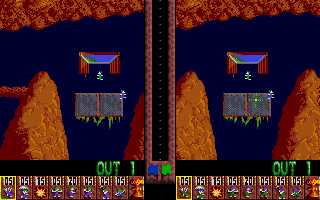
Dave and Tony were master populous players, and would more or less annihilate anyone they played – usually me. This didn’t change much when playing stunt-car racer, and while I wasn’t always beaten, I usually ended up falling off the track to rapturous jeering from the opposition. With all this in mind, and with the new 2-player bug still fresh, Dave decided he wanted to try and get some link up code working. So, inside the shoot-em-up I was working on, I created a small function to control the mouse, and then pass the information needed down that little white wire to Dave’s Amiga 2000.
While Dave controlled the Lemmings with his Mouse, I was controlling a second one, whizzing it around the screen via the null-modem cable. Dave had somehow made contact with another Amiga programmer called Dave Whiteman, and he was given the task of finishing my scrolling shoot-em-up, along with the entire source, and a general brief of “make a great shoot-em-up”. So, once a week he would pop in to show his progress, and get further instructions and advice from the rest of the DMA team. I was a bit huffy about this, as I was really enjoying doing it – and writing in 68000 for that matter, but such is life….

Gary was now trying to get levels together for Cutiepoo, and had drawn the first in a series of test backgrounds. He, Tony and Dave then sat down to decide which style to use. The winner turner out to be the chocolate factory, since they could all see some funny situations cropping up in here.
As I was again without anything to do, Dave set me the task of building a funny front end screen for the new Lemmings game. The front end Dave had in mind was going to consist of hundreds of little lemmings, each animating differently from the rest, so that the whole screen was filled with them.
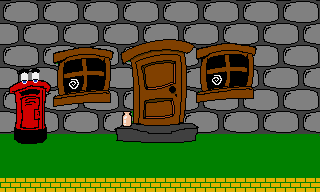
Some would then stop and pick up little white cards and spell out words – or that was the idea. I drew some animations of Lemmings doing silly (and sometimes impossible) things, and then got them all jumping around on screen. This turned out to be a classic example of things sounding like a great idea, but simply not working. The screen was just too confusing, and the idea was dropped. Dave moved me onto the Atari ST, and got me to start the ST version of Lemmings.
While I had coded some ST stuff before, I had never gotten that involved in it, so I called upon Wayne to help out in all the really tricky stuff. Wayne as usual, was only too happy to help, and I soon had all the hard stuff done. I then went on to write a simple Blitter emulator, so that the Amiga Lemmings code could be ported without any real effort. This turned out to be great fun, and I enjoyed every second, so it wasn’t long before I had a Lemming walking around a real level.
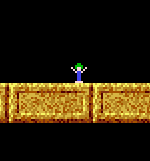
Dave who was currently working on the editor, decided he needed some floppy disk routines so he could save levels out. Dave, again called on Brian to write this, and Brian soon had something up and running. But it wasn’t to Dave’s liking this time, so he decided to “fix it” himself, and “DMA Dos” was born. These turned out to be very simple disk loading and saving functions that could plug into any game, and were in fact used from this point on in all DMA games on the Amiga.
One of the times Brian was in visiting, Dave showed him the new Nuke function in Lemmings. To say he thought it funny would be an understatement, since he fell backwards off his seat laughing!

The year was marching on, and it was now May. I had just turned 20, and the second ITV Telethon was about to begin. DMA decided to try and write a sponsored game, from scratch – in a day! This needed the whole workforce. Russell, Dave, myself, Steve and Gary and Scott all started on Monday 28th May to write “Super Off-Road Hot Turbo Buggy Simulator“
It was basically a simultaneous 4 player SuperSprint style for the Amiga. Russell did the physics; Dave did the drawing, OS etc. I did input and front-end, while Steve did the music. Needless to say, Scott and Gary did all the graphics.
It was a long day for the DMA team, from 9:30am to past midnight; but it got done, and was actually fairly good fun. It must also have been one of the first 4 player games around, but only friends and family ever saw it. They struggled towards the end, and the Music Steve did, ended up being dropped due to lack of space.
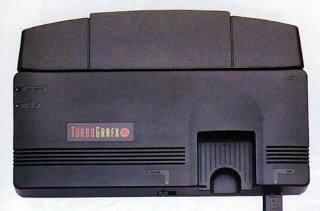
When June arrived, so did some new hardware. Dave got another new contract for “Shadow of the Beast” from Psygnosis, this time for the PC Engine. The PC Engine was an obscure, but very smart little console by NEC, which Dave was in love with at the time, so he leapt at the chance to program it. Dave was threatening to program it himself, but I immediately jumped up and protested, saying that this CPU was my speciality, so he should be allowed to do it.
Once the hardware arrived, Dave caved and decided to let me tackle it, while he carried on with Lemmings and his Monster Cartridge. The “Monster Cart” as it became known, was proving to be very tricky. Dave had already talked to Datel who owned the Action Replay series for the C64, and they were keen to get this for the Amiga version.
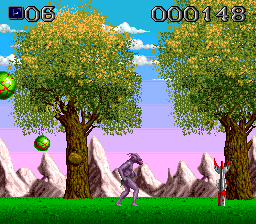
But the same problems kept cropping up, and invariably it would just fail to work right 100% of the time. Unfortunately for Dave, someone else beat him to it, and Datel bought that one instead. Dave did eventually figure out what was wrong, but it was too late, and Dave regrettably put aside his toy, and returned to Lemmings – this probably ended up being the best decision he ever made!
The PC Engine (or TG16 as the Americans call it) hardware had arrived, and I started programming a framework on the 23rd of July 1990. It only took me a week to get the basics running, ready for the rest of the game to be started. So a week later on the 30th, I started what was to be my most hated project.
Brian meanwhile took over the ST version of Lemmings, and using my code as a framework, set about improving it. Not much was left of the original code by the end of it, but it did allow Brian a good starting block from which to begin. For some reason however, my name appeared in the some prints of the final manual as the main programmer, even though it was Brian that did most of the work!

Dave was now thinking about sound, and Scott’s brother Brian was able to provide them. At first they were to be 60’s style TV theme tunes, but this soon proved to be a problem due to copyright issues. So, Dave decided that anything without copyright should be used. Richard and Steve were still busy coding Beast on the C64, and that was going fairly well, when I started my version, there were only 6 weeks to go. That proved to be somewhat optimistic. Several revisions were done, including the introduction of some new technology that I had come up with for my version. The game would go through several redesigns before finally being finished.
This year, the summer in Dundee was hot, too hot. And one afternoon, while baking away in the small and not well ventilated office, Dave decided everyone needed some ice-creams. So I was sent the local paper shop to get a stack of them to save the troops. This had been done several times before, only this time, it wasn’t enough. Dave declared that it was too hot, and we should all go and have a day outside playing golf! Dundee is blessed with several public golf courses, so off we went for a relaxing day outside, away from stuffy offices.
Gary turned out to be a natural, and although my putting was good, I did managed to lose more golf balls than anyone else. Dave as usual won the round, but I would get my revenge in years to come when Dave decided to take up badminton.
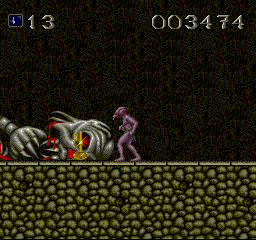
Brian now started on the now legendary sound effects, with the lemmings “squeeks” originally coming from Brian and Scot’s mum! Dave added them into the game with appreciative laughter coming from the team. DMA Were expanding, and outgrowing their small office, so Dave decided to take the plunge and move. He looked at the Dundee Technology Park, but was told they were too small a company for this development.
So, he found another place in town, at 49 Meadowside, and moved everyone all there. The new office had 4 rooms, and was high up on the 4th floor of an old office block. Moving in proved to be a chore since the lift only went to the 3rd floor, meaning everything; machines, disks, books, desks and chairs had to be carried up a flight of stairs.
On moving in, they discovered that one of the rooms had an old kitchen, and looked out over the back of an old pizza chain; The Pizza Gallery. I got this room, and the smells sent me into a pizza frenzy every….single….lunchtime – a fact he reminds everyone when they look at old picture of him and ask why I got so fat!
In the last office, Dave always had to throw Gary and Tony out when Psygnosis came to visit, so they could talk business, and so this time, Dave took a whole room to himself, right in the middle of the office. Gary and Tony went into the one closest the door, and it was here that Gary started to accumulate stuff he wouldn’t part with for many years to come. The restroom however was a disaster, since it set the whole building shaking when it was used, due to some dubious pluming! And finally realising that an office full of young males isn’t the tidiest in the world, Dave also hired a cleaner.

Russell had finally finished his degree course, and had rented some space from Dave in the final room, and had started the PC version of Lemmings, a game he would end up rewriting for several years.
Psygnosis and Ocean had just done a deal to publish Shadow of the beast for the new C64 GS console. This meant that that game would now come out on cartridge only. Richard now got access to fast loading times, and was able to take advantage of this in several areas.
Steve also got to exercise his writing skills, by doing small stories that were to be displayed while the game loaded. Steve preferred writing to anything else, and was used by DMA over the years for any number of stories – the most notable being the Hired Guns story.
Come September, Dave and Pam finally got hitched. So on Friday the 7th, everyone appeared at St Paul’s Cathedral in Dundee to watch Dave and Pam tie the knot. Wayne came up to watch and laugh as well, and after the ceremony they all went to the hotel for the usual party to watch the family embarrass themselves on the dance floor.
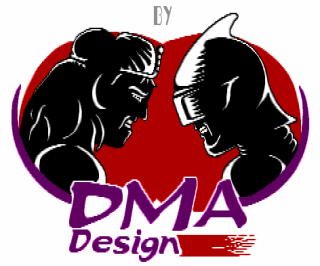
Another game, another logo. This time, Dave used a school friend of mine, Geoff Gunning. Geoff had just finished Art College, and would draw the strangest of all DMA’s logos, the two heads. Dave had come up with the idea of later animating two warriors fighting and turning in to stare at each other, but this proved too ambitious.
Dave had also found another team to carry on Walker, Ian Dunlop and Niell Glancy. This involved a redesign, but Niell was a budding designer, and set about doing just that. There were now 2 sections to the game, the actual level, and a perspective road between levels. This would consume quite a bit of Ian’s time to pull off, but he started it anyway.
At the end of September, we all headed back down to London for the PCW show. Brian came this time, and finally they met Tony. Psygnosis by this time were getting excited about Lemmings, and Dave had finished all the “basics” that would be needed. He had also finished the editor. It was heavily based on DPaint so was extremely simple to use, and since it was built right into the game, allowed rapid turn around on levels and testing.
The race was now on to finish the levels required, this task fell to me, Steve, Gary and Scott, with Dave trying to make one every now and then.
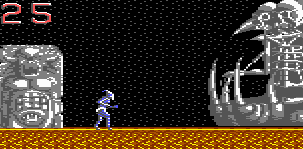
Dave by this time had gotten fed up with Cutiepoo, it just wasn’t going anywhere, and Tony wasn’t putting in the effort Dave expected. So Dave again “shelved” another game, and Tony was shown the door. Richard was now finishing up on Beast on the C64, and was finally able to get his life back together. He never worked Dave again however, since his thought that Dave receiving any of the money from Beast as unfair.
Dave of course viewed it differently; he subcontracted out to Richard, and took a risk on an unknown programmer, and as such, was still responsible if Richard never finished it. Richard went on to work with Russell in later years at Visual Sciences, before moving out of the game industry all together.
Lemmings was almost done, and everyone was offered a massive £10 for any level that made it into the game. This helped encourage everyone to spend time at night trying to make great levels. Gary, Scott and myself ended up trying to beat each other, by making what seemed like impossible levels, but it never worked. By this time, we were all so good at Lemmings, we could spot the solution in seconds.

Steve was having a harder time, every level he did ended up being too simple, or simply not working out at all. Dave also found it hard going, every now and then, he would demand they all go through and try THIS level. So, we’d all trudge through, take one look, point out another obvious flaw. Dave would then mutter, and tell them all to go away, only to shout half an hour later when he was sure he had fixed it this time!

Back in the real world, Gary was asked to draw a Lemming to give the Psygnosis P.R. staff an idea of what they were dealing with, since the little clump of pixels was all they had to go on. The levels were now progressing well, and there were a sizeable number available to test and improve upon. Psygnosis would also test the latest batch of levels, offering criticism and advice. They too were becoming expert in playing these levels, with the producer John Whyte being the lead tester, so keen were they.
I used to love getting the reports about levels back from John, as you could always tell when we had done well, since they would list time taken to solve the level. This was usually three or four minutes, but when we send down my “It’s Hero Time” level, that report came back with lots of marks and scribbles around it, taking over an hour or so for them to solve it. I felt very smug at that point.

Gary and Dave now set about doing an intro and end sequence. They did the intro easily enough, with Gary actually doing the tune for it as well. But the end sequence was to be something different. Mike had taken to drawing some of the shop items they had been receiving for the game, and around this, Dave decided to digitise the team. He then put up some well done text, and got the team to clap and cheer, all in all, very different. The text at the end of the game read:
Congratulations!
Everybody here at DMA Design salutes you
as a MASTER Lemmings player. Not many
people will complete the Mayhem levels,
you are definitely one of the elite
Now prepare to receive rapturous
applause from all here.
By Christmas the Amiga version of the game was finally finished, and was sent of to be mastered and for promotional material to be distributed. Meanwhile, Mike carried on with Shadow of the Beast..